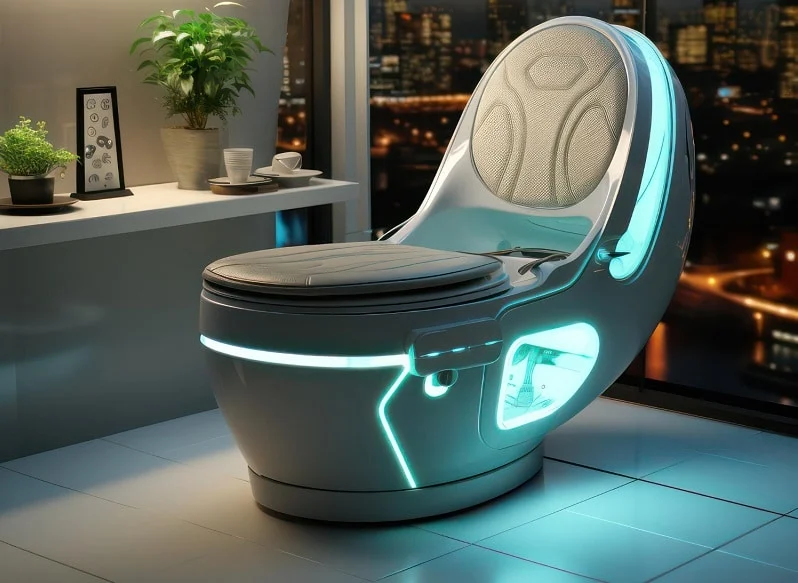In the quest for sustainable living, zero waste toilet technology emerges as a groundbreaking advancement that promises to transform the way we approach sanitation. In an era where environmental consciousness is paramount, the integration of zero waste solutions into everyday life is critical. This innovative technology not only addresses the pressing issue of waste management but also contributes significantly to reducing the environmental footprint.
Industry QA professionals are increasingly recognizing the potential of zero waste toilet technology as a pivotal component in achieving sustainability goals. By minimizing waste and optimizing resource use, this technology positions itself as a leader in eco-friendly innovations.

Understanding Zero Waste Toilet Technology
At its core, zero waste toilet technology is designed to drastically reduce or eliminate waste production. This is achieved through advanced mechanisms that treat and recycle waste onsite, transforming it into valuable resources such as fertilizer or biogas. The concept is not only environmentally friendly but also economically viable, offering significant savings in waste disposal costs.
One of the most compelling aspects of zero waste toilet technology is its ability to operate independently of traditional sewage systems. This makes it particularly advantageous in areas lacking proper sanitation infrastructure, such as rural communities or developing regions. By providing an autonomous solution, these toilets ensure that waste is managed effectively, reducing reliance on external resources.
Key Features and Benefits
Environmentally Friendly Design
The primary benefit of zero waste toilet technology lies in its environmentally friendly design. By utilizing natural processes and innovative engineering, these toilets significantly reduce the carbon footprint associated with traditional sanitation methods. This is achieved through the efficient use of water and energy, as well as the conversion of waste into usable byproducts.
Cost-Effectiveness and Resource Optimization
In addition to environmental benefits, zero waste toilet technology also offers considerable cost savings. By reducing the amount of waste requiring disposal, these systems lower operational expenses for businesses and communities. Furthermore, the resources generated from waste can be sold or used locally, creating a sustainable economic model.
Improved Sanitation Access
One of the critical challenges faced by many communities is access to proper sanitation facilities. Zero waste toilet technology addresses this issue by providing a viable solution that can be implemented in various settings. Whether in urban areas, rural communities, or developing countries, these toilets offer improved sanitation access, enhancing public health and well-being.
Challenges and Considerations
While zero waste toilet technology presents numerous benefits, it also faces several challenges that must be addressed to ensure successful implementation. One of the primary concerns is the initial cost of installation, which can be prohibitive for some communities or organizations. However, the long-term savings and environmental benefits often outweigh these initial expenses.
Another consideration is the need for ongoing maintenance and operation. While these systems are designed to be efficient and user-friendly, they do require regular upkeep to ensure optimal performance. This necessitates the involvement of trained professionals who can manage and maintain the technology effectively.
Future Prospects and Innovations
The future of zero waste toilet technology looks promising, with ongoing research and development efforts focused on enhancing its efficiency and accessibility. Innovations in materials, design, and processes are expected to further improve the performance of these systems, making them an even more attractive option for various applications.
For instance, advancements in low-water toilet innovations are likely to complement zero waste solutions by further reducing water consumption. Additionally, the integration of smart technology and IoT devices could enhance monitoring and management capabilities, ensuring seamless operation and maintenance.
Furthermore, collaborations between industry leaders, government bodies, and non-profit organizations are essential in driving the adoption of zero waste toilet technology on a global scale. By working together, stakeholders can address challenges, share best practices, and promote awareness of the benefits associated with this innovative approach to sanitation.
Conclusion
In conclusion, zero waste toilet technology stands at the forefront of sustainable sanitation solutions. Its ability to minimize waste, reduce environmental impact, and provide cost-effective alternatives makes it an invaluable asset for communities worldwide. As industry QA professionals and stakeholders continue to explore and implement this technology, the potential for a cleaner, greener future becomes increasingly attainable.
For more insights into the future of sanitation, you can explore the future of toilet technology.

Frequently Asked Questions
What is zero waste toilet technology?
Zero waste toilet technology refers to systems designed to eliminate or significantly reduce waste production through onsite treatment and recycling processes. These toilets convert waste into valuable resources, such as fertilizer or biogas, offering a sustainable and eco-friendly solution.
How does zero waste toilet technology benefit the environment?
This technology benefits the environment by reducing the carbon footprint associated with traditional sanitation methods. It optimizes resource use, minimizes waste, and generates usable byproducts, contributing to a more sustainable and eco-friendly future.
What are the challenges of implementing zero waste toilet technology?
The primary challenges include the initial cost of installation and the need for ongoing maintenance. However, the long-term savings and environmental benefits often outweigh these initial expenses, making it a viable solution for many communities.
This article contains affiliate links. We may earn a commission at no extra cost to you.






